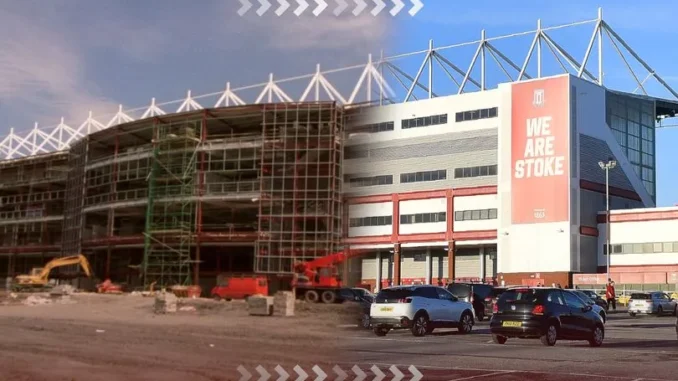
Stoke City left the Victoria Ground in summer 1997 and have since competed in three divisions at their new stadium.
Stoke City have now spent 28 seasons at their current home, the bet365 Stadium, after moving from the historic Victoria Ground. The club had been based at the Vic since March 1878, but the aftermath of the Hillsborough disaster led to the Taylor Report, which mandated all-seater stadiums for clubs in the top two divisions. Faced with costly and impractical renovation options, Stoke decided in January 1996 to relocate just a mile south, choosing a site that once housed the Stafford No.2 Colliery. A plaque now marks the area’s mining heritage.
Construction of the new stadium began on September 2, 1996, and supporters could witness the progress through the gap between the Boothen End and Butler Street stands at the Vic. Stoke played their final game there with a win over West Brom, who had also been their opponents in the first league game back in 1888. By March, the new pitch had been seeded, and by June, electrical and plumbing systems were being installed while 28,000 seats were fitted. Though the stadium officially opened with a League Cup match against Rochdale in August 1997, development didn’t end there.
Over the years, the club has made significant upgrades. While there was once a claim that Stoke had spent more on a single player than on building the stadium itself (£14.7 million), that overlooks major investments in infrastructure. Enhancements have included new big screens, the completion of the south-east corner in 2017, expanded concourses, new seating, renovated bars, and upgraded hospitality suites.
Last summer saw even more improvements, including a new fan zone behind the Boothen End, a relocated away section, and the introduction of safe standing in the south stand. This week, chief operating officer Richard Smith confirmed that further upgrades are planned. Work will begin in the new year to expand the concourses in the south, east, and north stands, with renovations to the west stand scheduled for next summer.
To mark these developments, the club has been revisiting its photo archive, capturing the stadium’s transformation, moments of triumph and heartbreak, and artist renderings of what’s to come. Fans are invited to share what they love—or would like to see changed—about their evolving home.
Leave a Reply